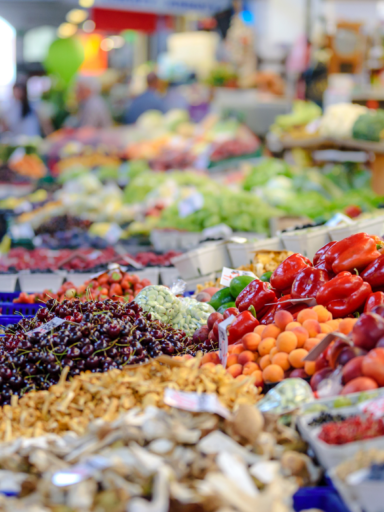In recent years, the gluten-free lifestyle has gained significant popularity due to the growing awareness of celiac disease, gluten intolerance, and the desire for healthier eating habits. While maintaining a gluten-free diet can sometimes be challenging, it doesn’t mean you have to miss out on the delightful experience of international cuisine. In fact, embarking on a culinary adventure around the globe can open up a whole new world of flavors and textures for those following a gluten-free lifestyle. In this blog post, we will explore how to enjoy gluten-free international cuisine safely, allowing you to savor global flavors without compromising your dietary needs.
1. Understanding Gluten-Free Requirements:
Before diving into the world of international cuisine, it’s crucial to understand what “gluten-free” truly means. Gluten is a protein found in wheat, barley, rye, and some other grains. For individuals with celiac disease or gluten intolerance, consuming gluten can lead to various health issues. Therefore, it is essential to identify ingredients that contain gluten, such as wheat-based flours, breadcrumbs, soy sauce, and certain marinades.
2. Research and Explore:
When venturing into gluten-free international cuisine, research becomes your best friend. Before trying a new restaurant or attempting to recreate a foreign dish at home, take some time to investigate the culinary practices of the region you’re interested in. Look for traditional dishes that are naturally gluten-free or can be easily modified to meet your dietary needs. For example, many Asian cuisines offer gluten-free options like rice-based noodles, sushi rolls with tamari instead of soy sauce, or stir-fried dishes without thickening agents.

3. Communicate with Chefs and Restaurant Staff:
When dining out, don’t hesitate to communicate your gluten-free requirements with the chefs or restaurant staff. Educate them about your dietary restrictions and ask if they can accommodate your needs. Many establishments nowadays have gluten-free menus or are well-versed in providing alternative options. By speaking up and being clear about your needs, you can enjoy a safe and satisfying dining experience.
4. Safe Gluten-Free International Choices:
Let’s embark on a culinary journey and explore some gluten-free options from different corners of the globe:

- Mediterranean Delights: Mediterranean cuisine offers a wide array of gluten-free options, including grilled meats, fresh seafood, vibrant salads, and dishes made with gluten-free grains like quinoa or millet. Enjoy flavorful Greek souvlaki, Spanish paella with saffron-infused rice, or Lebanese tabbouleh with gluten-free grains.
- South Asian Temptations: Indian and Thai cuisines have a wealth of gluten-free choices. Delight your taste buds with fragrant curries made from naturally gluten-free spices and coconut milk, accompanied by rice or gluten-free bread such as roti or dosa.
- Latin American Fare: Traditional Latin American dishes often rely on naturally gluten-free ingredients such as corn, beans, rice, and plantains. Savor Mexican tacos with corn tortillas, Peruvian ceviche, or Brazilian feijoada, a flavorful black bean stew.
- Middle Eastern Flavors: Middle Eastern cuisine offers a range of gluten-free options as well. Indulge in Lebanese mezze with gluten-free options like hummus, baba ganoush, and grilled kebabs. Explore Moroccan tagines made with aromatic spices and served with gluten-free couscous made from alternative grains like millet or quinoa.
5. Gluten-Free Cooking Adventures:
Bringing international flavors into your own kitchen is an exciting way to experiment with gluten-free cuisine. Explore online recipes, cookbooks, and cooking classes dedicated to gluten-free international dishes. By learning about alternative ingredients and techniques, you can recreate beloved dishes from various cultures in a safe and gluten-free manner.
6. Gluten-Free Travel Tips:
For those who love to travel, maintaining a gluten-free diet while exploring new destinations can be a bit challenging but not impossible. Research restaurants in advance, use gluten-free travel apps, and consider packing gluten-free snacks for emergencies. Learning a few key phrases in the local language, such as “gluten-free” or “I cannot eat gluten,” can also be helpful when communicating your dietary needs to locals.
Following a gluten-free diet doesn’t have to restrict your culinary experiences or limit your exploration of global flavors. With careful research, communication with chefs, and an understanding of naturally gluten-free ingredients, you can safely enjoy a diverse range of international cuisines. Embrace the opportunity to savor the delicious and authentic dishes from around the world, all while adhering to your gluten-free lifestyle. So, pack your bags (or apron) and embark on a gluten-free journey through the vibrant tapestry of global cuisine. Bon appétit!



